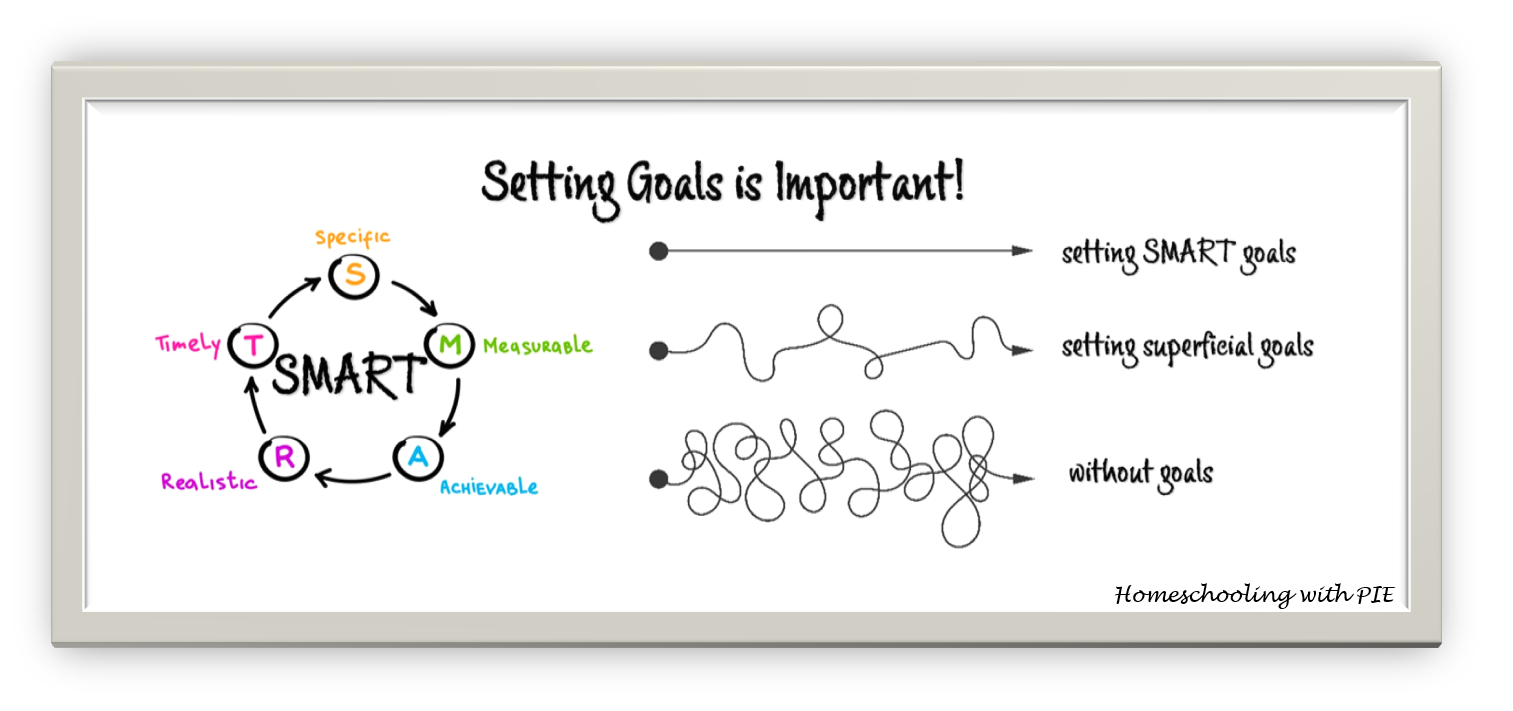MANAGING EXPECTATIONS: SMART GOALS

Managing Expectations: SMART Goals
Unlocking Success: The Power of SMART Goals in Homeschooling
Homeschooling provides a unique opportunity for personalized and tailored education, allowing students to learn at their own pace and in a way that best suits their individual needs. One effective way to enhance the homeschooling experience is by implementing SMART goals. SMART goals are Specific, Measurable, Achievable, Relevant, and Time-bound, providing a structured framework that fosters motivation, accountability, and success. In this article, we'll explore the advantages of setting SMART goals in the context of homeschooling, with examples for elementary, middle, and high school levels.
ADVANTAGES OF SMART GOALS IN HOMESCHOOLING:
1. Specific (clarity and focus):
- SMART goals bring clarity to learning objectives, helping students and parents clearly understand what needs to be accomplished.
- Example: Elementary school students can set a specific goal to read a certain number of age-appropriate books within a month, fostering a love for reading.
2. Measurable (calculable progress):
- SMART goals allow for the measurement of progress, enabling students to track their achievements and stay motivated.
- Example: Middle school students aiming to improve their math skills can set a measurable goal to solve a specific number of challenging problems each week.
3. Attainable (achievable milestones):
- SMART goals are designed to be achievable, ensuring that students set realistic objectives that they can accomplish.
- Example: High school students interested in science can set a goal to conduct a specific number of experiments within a semester, making the learning experience both challenging and attainable.
4. Relevant (related to personal growth):
- SMART goals are relevant to the learner's interests and aspirations, making the educational journey more meaningful.
- Example: Elementary school students fascinated by history can set a goal to research and create a project on a historical figure or event, aligning their studies with personal interests.
5. Time-Bound (timeframes and deadlines):
- SMART goals have a time-bound element, instilling a sense of urgency and discipline in students to meet deadlines.
- Example: Middle school students exploring creative writing can set a time-bound goal to complete a short story or poem within a specific timeframe, enhancing time management skills.
CONCLUSION
Implementing SMART goals in homeschooling creates a structured and effective approach to education, promoting clarity, motivation, and success. By setting Specific, Measurable, Achievable, Relevant, and Time-bound objectives, students can experience a more focused, rewarding, and individualized learning journey. Whether in elementary, middle, or high school, the power of SMART goals empowers homeschoolers to take charge of their education and achieve their full potential.
Managing Expectations: SMART Goals